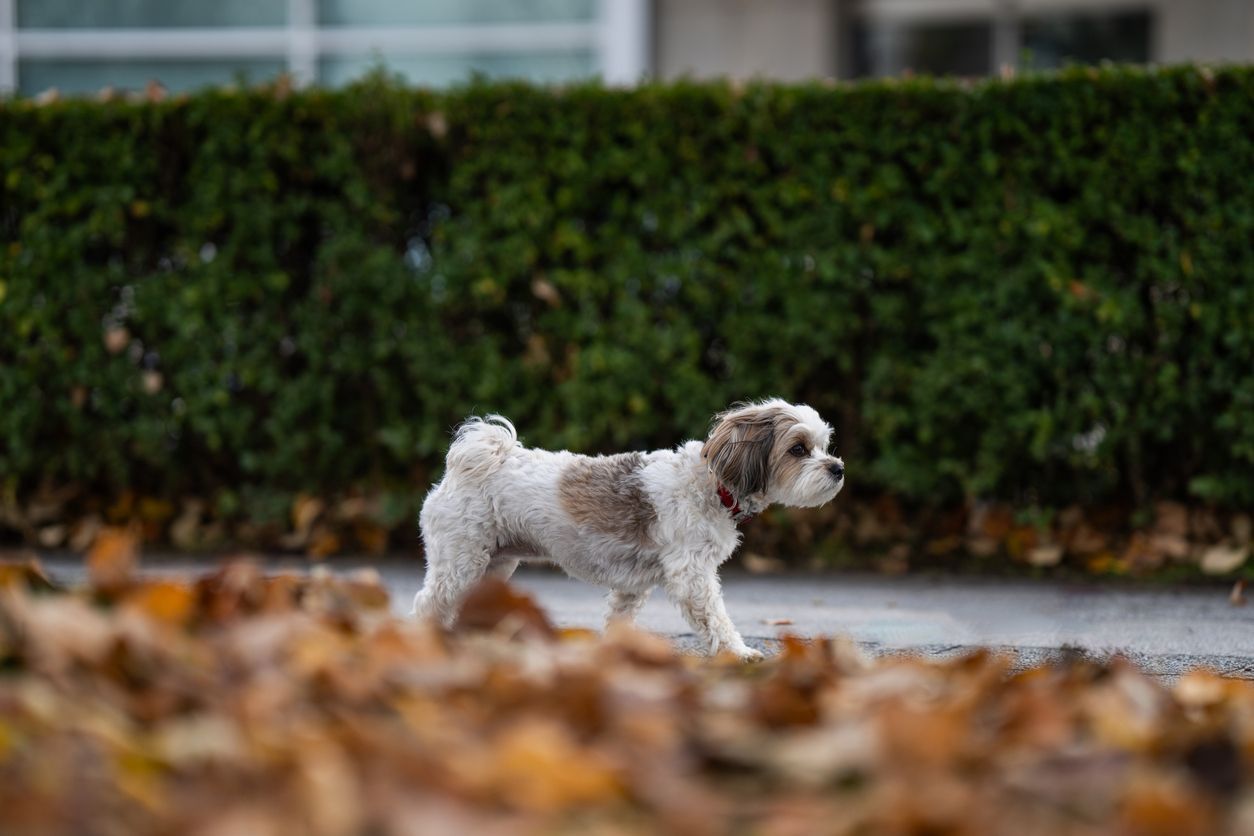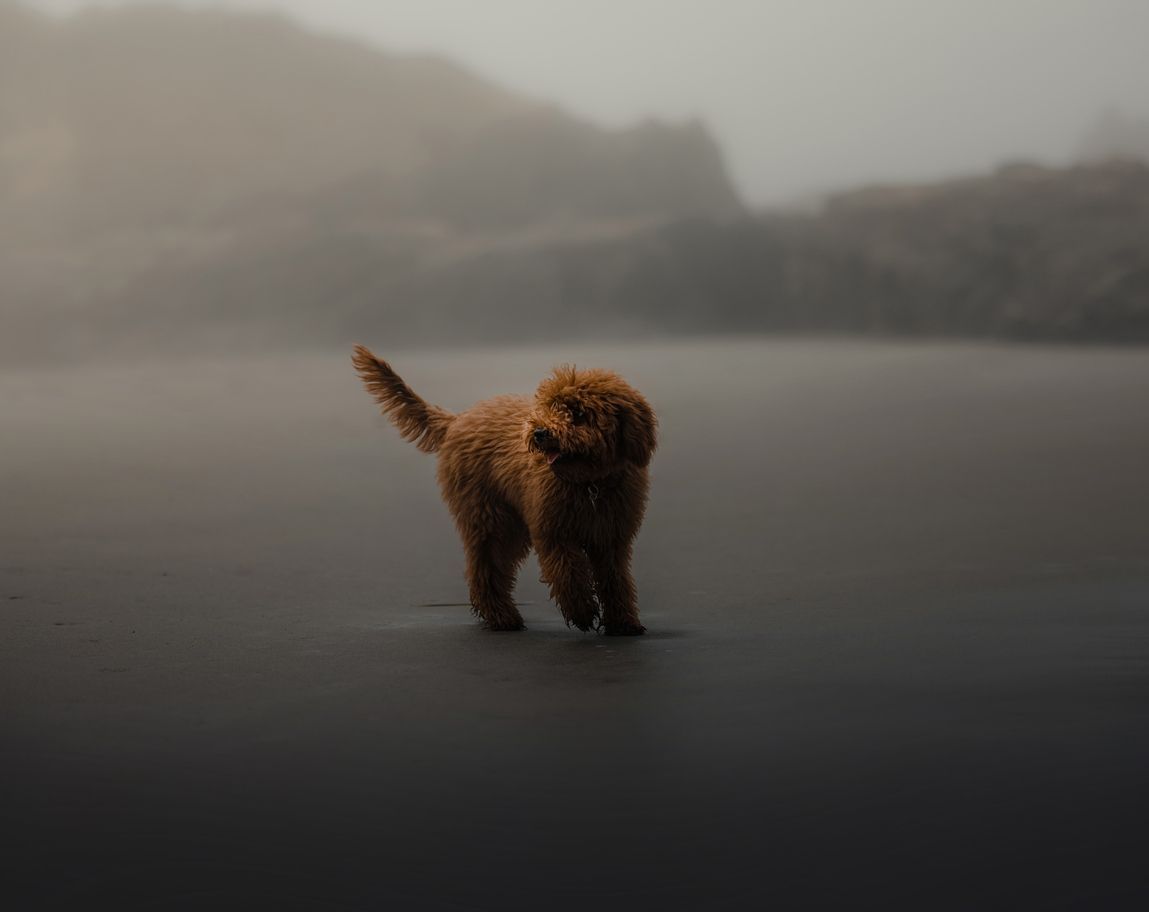How safe is the water your pet is drinking?

You may enjoy taking your dog out and about to lakes, parks, beaches, or even on road trips, but it’s important to be aware of what your dog is drinking. Animals are inclined to take a drink from any available water source without regard for its safety. Some water sources are potentially dangerous, either because they contain toxins or expose a dog to pathogenic organisms. Knowing the risks and what to look out for are key in helping your animals lead long and healthy lives.
Potentially dangerous water sources
Here are some water sources to be careful around with your pet.
Lakes/Ponds
While taking your canine companion out on a trail for a walk, it may seem like a good idea to let your dog run to the nearest lake or pond to take a drink. However, these sometimes stagnant bodies of water can hold the poorest quality water. Lakes and ponds may have mold or algae which can contain bacteria. If animals consume these bacteria, they may make your dog ill. Blue-green algae, also known as cyanobacteria, will give the water a pea soup green color in the summer and lead to **liver disease and neurologic symptoms, like seizures. Fertilizers, weed killers, and pesticides may also run off into these water sources from nearby areas, making lakes and ponds a potentially unsafe source of hydration. Keep your pets on a leash if you are strolling in these areas.
Puddles and standing water
Even though a long walk with your dog can be a nice pick-me-up after a rainstorm, puddles can also be dangerous places to let your dog quench their thirst. While allowing your animal to run through puddles, depending on your environment, be cautious of what they may ingest along the way.
Hazards in natural water sources
Three examples of contaminants in natural water sources that can be hazardous to your pet are leptospirosis, giardia, and blue-green algae. It is worth noting that these also are potentially dangerous to humans.
Leptospirosis: Leptospira bacteria are shed in the urine of infected wild animals and livestock. It can be present in high enough concentrations in runoff that collects in puddles and ponds to infect any other animal (or human) who drinks the contaminated water. Some wild animals, like racoons, opossums, and rodents carry and shed the bacteria without getting sick, so any water sources that may be contaminated with urine from these animals are riskier. Dilution reduces the likelihood of infection, so small puddles of runoff are more risky than large lakes.
Humans can be infected with Leptospira the same way animals are, but the danger is even more significant for any humans around a dog with leptospirosis. These dogs produce abnormally large amounts of urine and are usually too sick to go outside to relieve themselves. Humans are at risk of exposure directly from the infected dog’s urine while they clean it up.
Symptoms of leptospirosis include:
- Lethargy
- Vomiting
- Loss of appetite
- Excessive urination
Not all infected dogs become sick, but those that do develop life-threatening kidney failure. A vaccination is available. Schedule a virtual care appointment to learn more about preventing leptospirosis and to find out if the vaccine is appropriate for your dog.
Giardia: Various domestic and wild animals will carry this organism in their intestinal tract and shed it in their feces. Giardia contaminates water sources in parks and areas with wildlife. For example, your dog could ingest giardia by drinking water from a compromised creek or pond. Contact with another animal’s poop also puts your pet at risk. Dogs don’t become ill every time they ingest giardia, but when they do the most common symptoms is diarrhea. There is no vaccine for giardiasis. As with leptospirosis, humans are at risk for contracting giardiasis from contaminated natural water sources, but - fortunately - it is very rare for infected dogs to transmit the disease to people. **
Blue-green algae blooms: This unsuspecting toxic microorganism increases in freshwater bodies during warm weather that is 75℉/23℃ and above. Containing chlorophyll, it flourishes in warm, stagnant water that catches fertilizer runoff or sewage. So, when taking your pets on walks by ponds or lakes, be cautious of their exposure to blue-green algae blooms. Also known as cyanobacteria, this group of organisms can be severely toxic to dogs, cats, livestock, wildlife, birds, and fish. If a lake or pond has blue-green algae blooms, the water will have a pea-green paint or slime surface, and depending on wind conditions, it will most likely be around the shoreline, where animals may drink or swim. This bacteria can also be blueish, brownish, or reddish-green. Symptoms such as weakness, lethargy, low appetite, vomiting, and collapse are common. And defecating can kick in within the first 15 minutes of ingestion. This type of poisoning is severe and can turn fatal. Contact your local vet immediately if you think your pet has been affected by this bacteria. And in the meantime, avoid any old ponds or lakes with scum on the top.
Preventive care
Water is a necessity for animals, just like it is for us. The best way to guarantee you’re doing all you can to avoid exposing your dog to pathogens or toxins in drinking water is to carry your own supply of clean drinking water when you are out together. Similarly, avoid allowing your dog in or near any natural water sources. If wading, swimming, boating, or hiking are in your plans, learn the risks and make your decisions accordingly, because your dog is likely to end up ingesting at least a little bit of any natural water source they’re around.
If you have any concerns or questions regarding unsafe water consumption, book a virtual vet appointment so a veterinarian can help you make informed decisions when it comes to your pet’s health.




